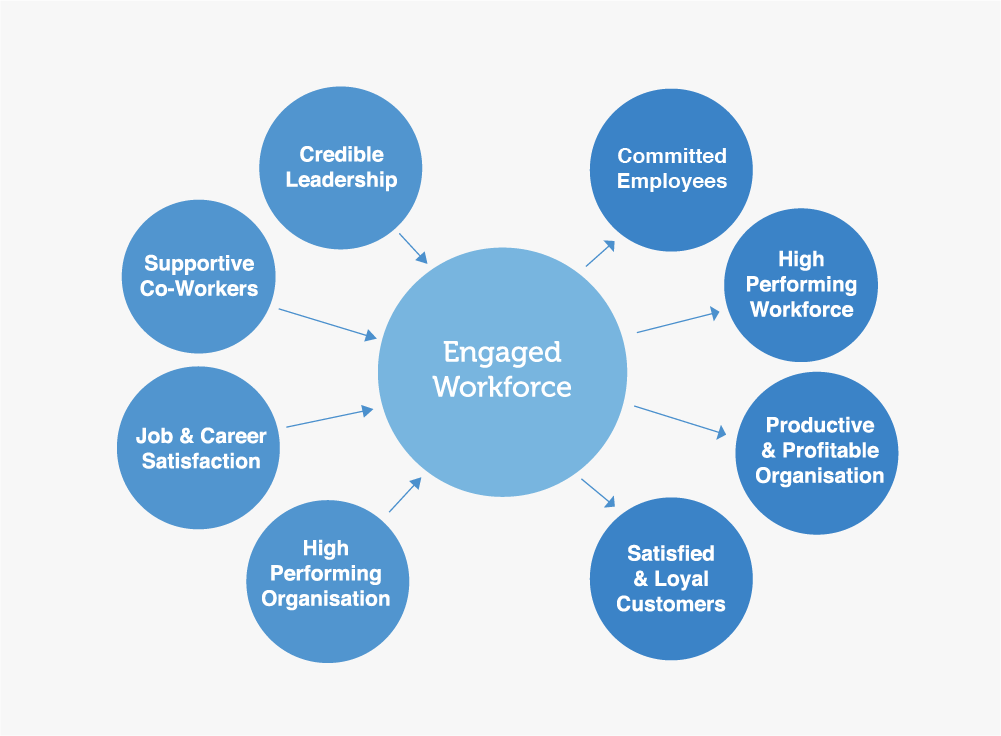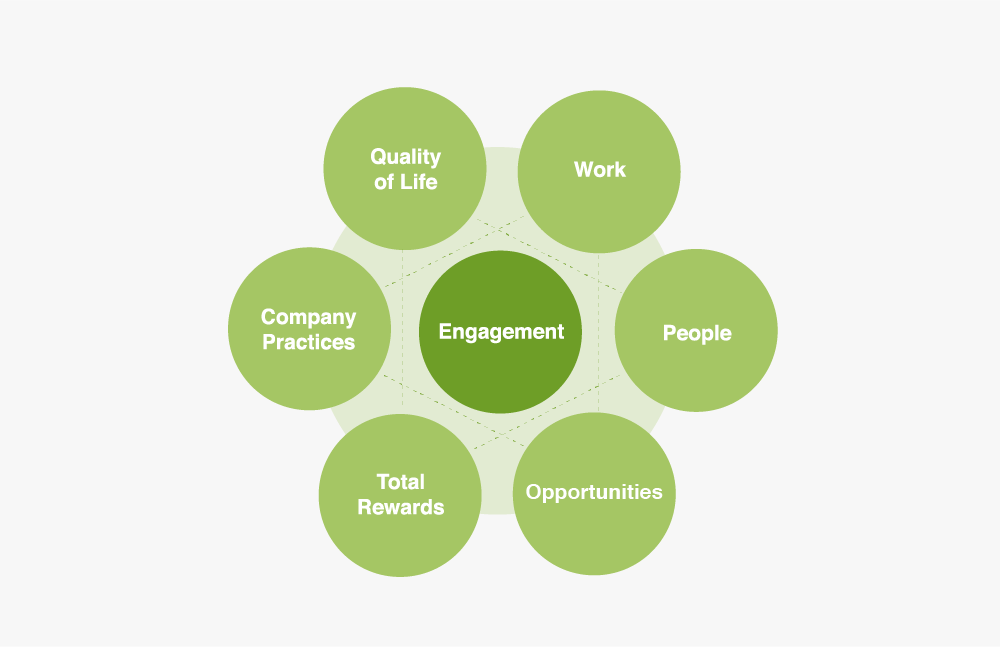Employee Engagement
There are a number of models that seek to set out the factors in Employee Engagement. The example below identifies the importance of Satisfied and Loyal Customers to a person feeling engaged as well as a Productive and Profitable Organisation.

This model focusses more on practices and work-life balance.

In both models the importance of effective leadership comes through loud and clear.
How to achieve engagement
Employee engagement is about unlocking peoples potential at work in order to benefit the individual and the organisation. It is about retaining and building on the commitment and desire to do a good job to maximise individual and organisational performance and willing to expend extra effort to help it succeed.
Employee engagement can be seen as ultimately about performance, if individuals are performing well then it makes sense that teams, divisions, departments and organisations will work effectively together and customers will receive better service.
Research has shown clear links between highly engaged employees and the following factors:
- Customer satisfaction and loyalty
- Employee satisfaction
- Employee retention
- Improved productivity
- Profitability
There are many reports on Employee engagement and David McLeod and Nita Clarke specifies four commonly agreed drivers of employee engagement.
- Leadership which maintains a strong, transparent and explicit culture and makes a clear link between the overall vision and direction of the organisation and employees roles.
- Managers who treat people as individuals recognise contribution and offer clarity of purpose. As a result people feel valued, equipped and supported to do their job.
- Employees are encouraged to give their ideas and be listened to both at the level of their individual job and department.
- The belief among employees that the organisation really lives its values resulting in trust and integrity.